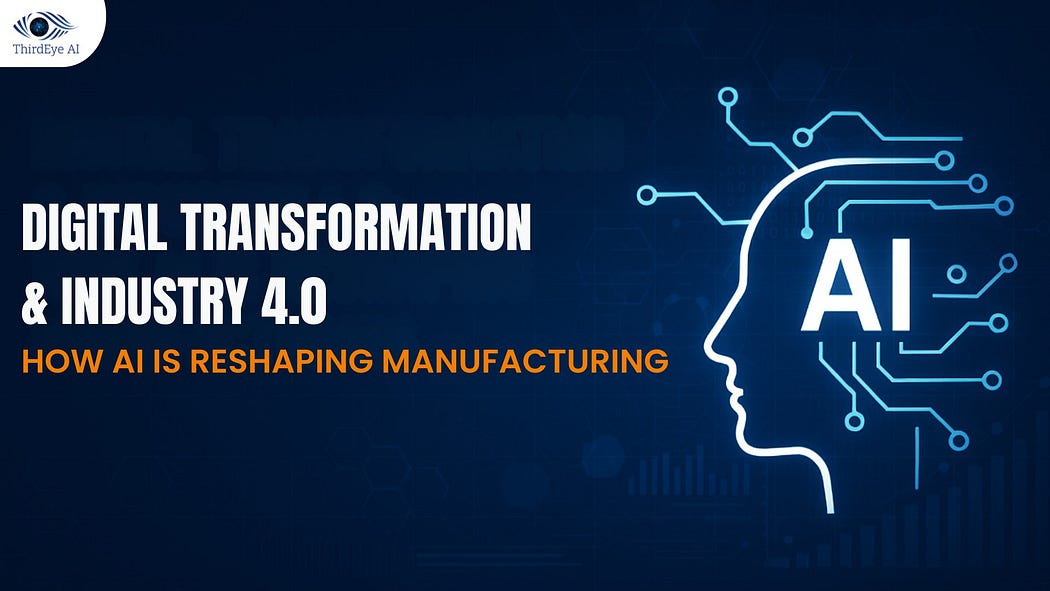
Manufacturing is undergoing a major change called Industry 4.0 — the fourth industrial revolution that combines AI, IoT, big data, and automation. Instead of isolated machines and manual tasks, factories are becoming connected systems that provide real-time insights and adapt to conditions quickly.
At the center of Industry 4.0 is AI-powered digital transformation, which is redefining how manufacturers operate and compete.
Why Are Manufacturers Adopting Industry 4.0 and AI?
Companies are turning to these technologies because
- Increasing global competition requires faster, more efficient production
- Customers demand better quality and quicker delivery
- Supply chains are more complex and need constant monitoring
- Workforce availability and costs create pressure to reduce manual work
- Environmental regulations push for energy-efficient processes
- Proactive maintenance reduces risk of unexpected equipment failure
Simply put: Keeping old methods means falling behind. Industry 4.0 tools allow manufacturers to run operations more effectively and with greater control.
How AI Supports Industry 4.0 on the Factory Floor
Here’s how AI is helping manufacturers improve key areas:
1. Predictive Maintenance — Preventing Unexpected Failures
AI uses sensor data and Condition-Based Monitoring (CBM) to forecast when machines might fail. Maintenance can then be planned in advance, avoiding costly breakdowns.
Results: Less downtime, lower repair expenses, longer machine life.
2. Quality Inspection Using Vision AI
AI-powered cameras inspect products rapidly to identify defects that humans might miss. This helps maintain consistent quality throughout production.
Results: Fewer defective products, improved customer satisfaction.
3. Improving OEE (Overall Equipment Effectiveness)
AI analyzes equipment and process data to find inefficiencies and causes of downtime, helping teams improve productivity.
Results: Better utilization of machines and clearer performance insights.
4. Inventory Management with AI Forecasting
AI predicts demand based on past sales and production trends to keep inventory levels balanced.
Results: Reduced inventory costs and prevention of production stoppages.
5. Monitoring Energy Usage
AI tracks energy consumption and highlights wasteful areas, supporting efforts to reduce expenses and meet sustainability targets.
Results: Lower energy costs and environmental impact.
6. Enhancing Worker Safety
AI systems monitor safety compliance and alert managers to unsafe conditions or behaviors immediately.
Results: Safer workplaces and fewer incidents.
Reasons Manufacturers Choose These Technologies
- Increase operational flexibility to respond to market changes
- Control costs by using resources more effectively
- Maintain consistent product quality
- Improve workplace safety and comply with regulations
- Stay competitive in a changing market
- Support environmental responsibility
Conclusion
Industry 4.0 and AI are essential for manufacturers aiming to improve performance and reduce risks. Companies relying on traditional methods face inefficiencies, quality issues, and lost opportunities.
Adopting AI-based solutions helps manufacturers run operations with better control, clearer insights, and more reliable outcomes.
Comments